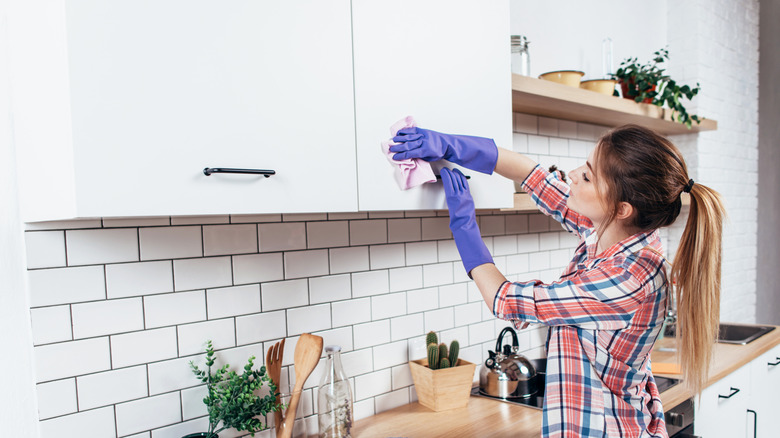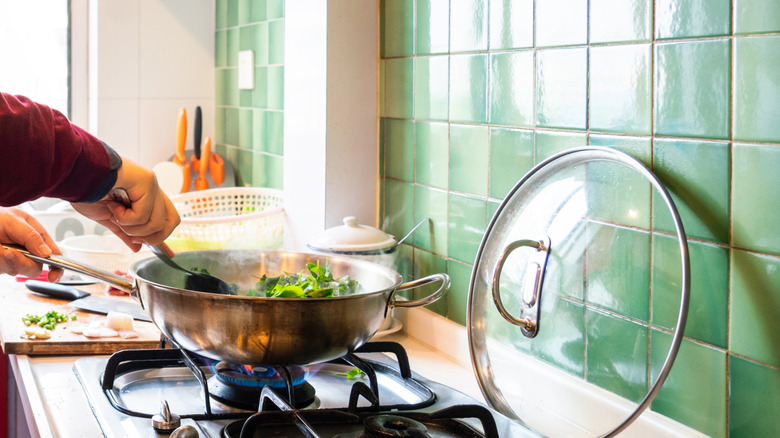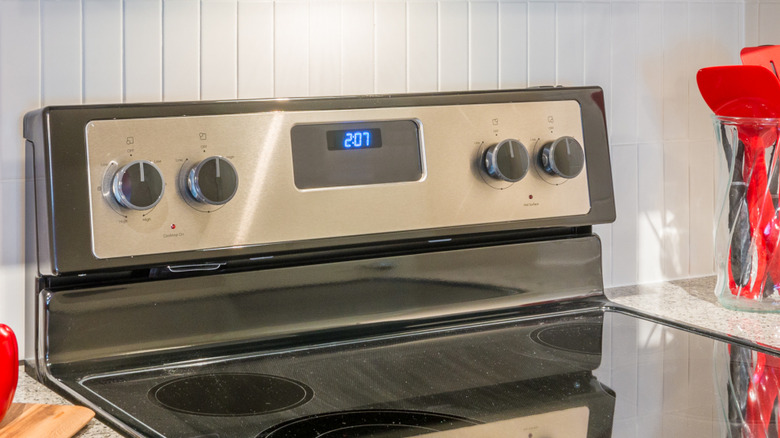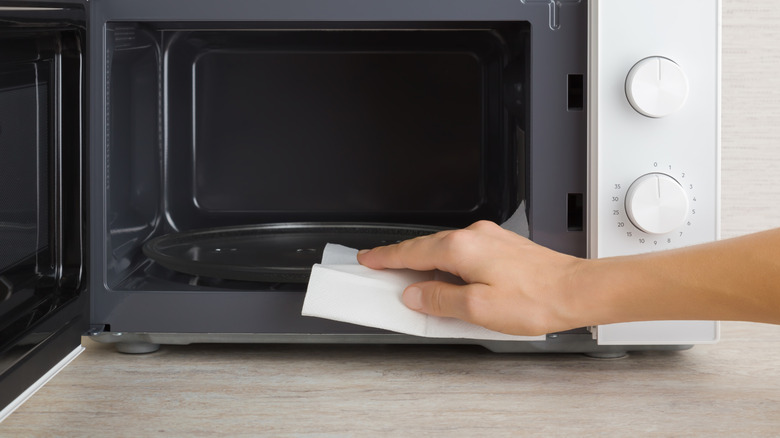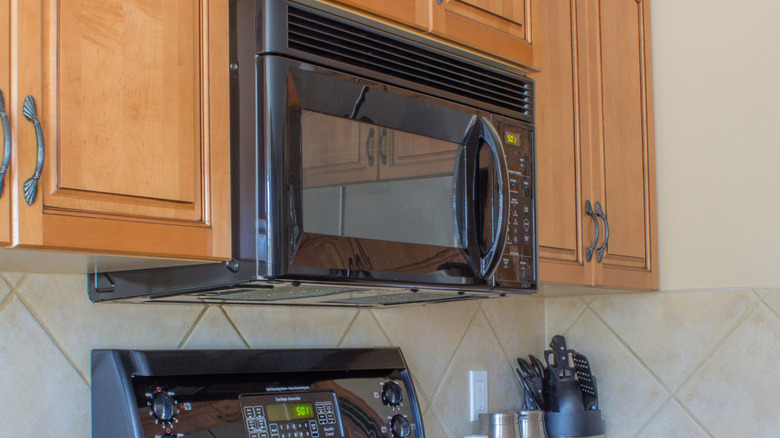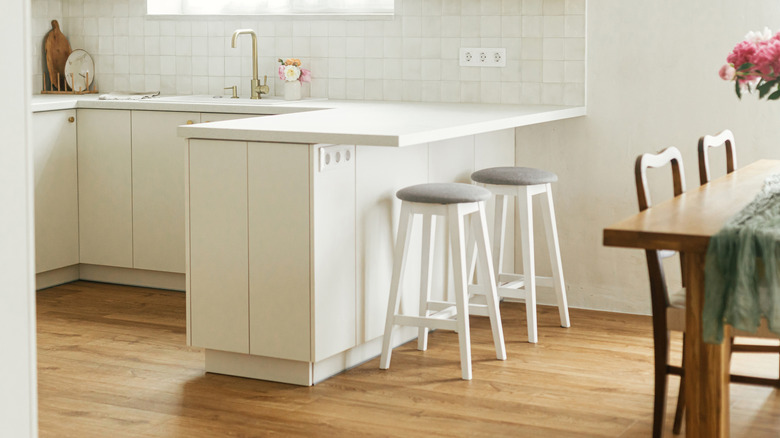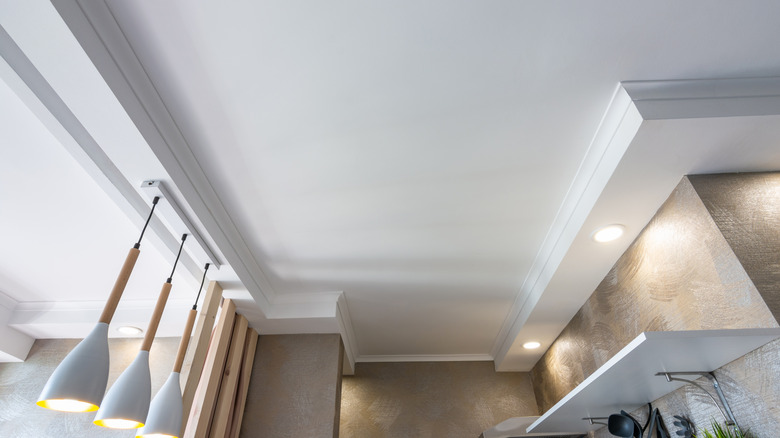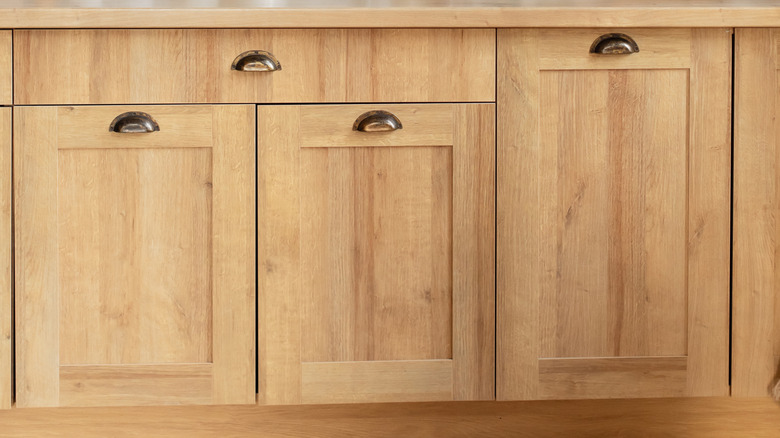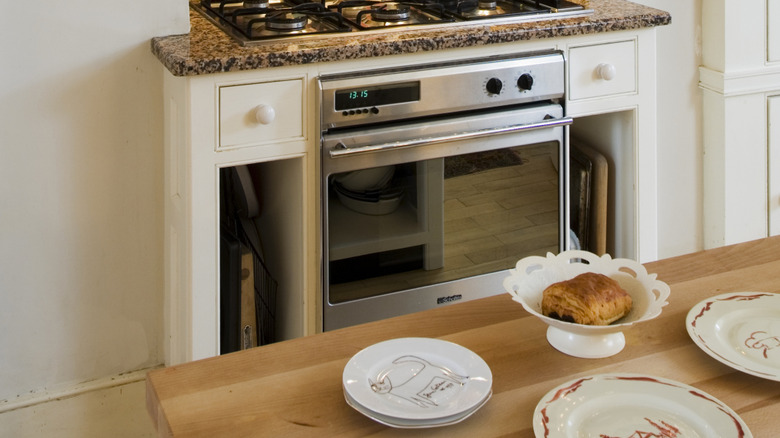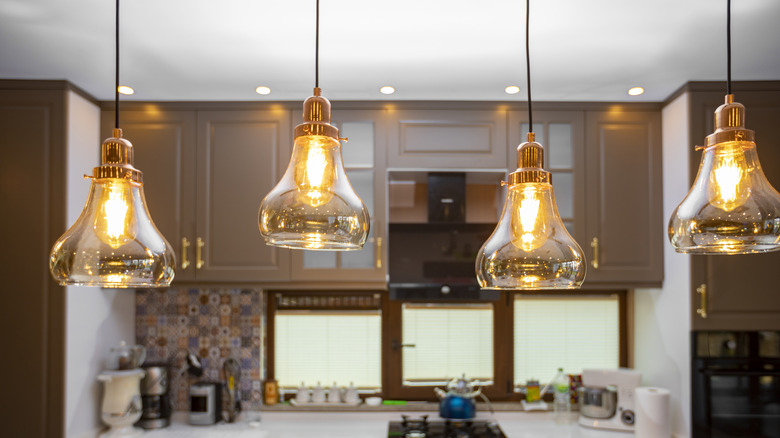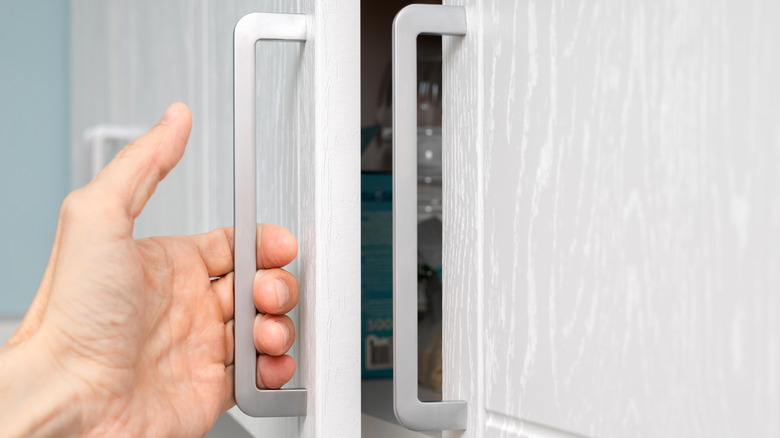10 Spots In The Kitchen Everyone Forgets To Degrease
We may receive a commission on purchases made from links.
If you're obsessed with keeping your kitchen clean, you likely have already thought of important tasks, such as washing dishes, emptying the dishwasher, and wiping down everyday surfaces (like the sink or countertops). Ensuring that your cooking space is thoroughly cleaned, however, depends on more than just the mess you can see. Even if you don't have any lingering splattered sauces or spilled liquids to wipe away, there's a hidden substance that can penetrate even the most unsuspecting of spots: grease.
When you cook with oil, the steam from your pots, skillets, saucepans, woks, and other stovetop vessels travels up and around your kitchen, leaving an oily film in areas that you certainly didn't directly splash oil or grease on. Cooking oils can also splatter onto surfaces, which then get overheated and lead to stubborn grease stains. Degreasing your kitchen isn't super technical — it just requires a little elbow grease and an easy DIY degreaser you can use to tackle the mess. It does, however, require you to know the common kitchen spots that everyone forgets to degrease. These areas include knobs and drawer pulls, the microwave, walls, fridge, and cabinet faces, to name a few.
Backsplash
Positioned directly behind the stovetop, a backsplash in your kitchen can be a prime spot for grease buildup. Even if you take care when cooking and try to wipe up messes promptly, this location will continue to be a challenge unless it's regularly given some TLC on cleaning day. You can try various grease cutters, like vinegar and baking soda, or conventional store-bought cleaners, such as Easy-Off Heavy Duty Degreaser Cleaner. Just read the instructions to make sure it's safe to use on your backsplash material.
Stove backguard
Similar to the aforementioned backsplash wall that might be behind your stove, many mainstream stoves are fitted with a part called the backguard, which may be situated between the control panel of the stove and the stovetop itself, depending on your particular model. This part will deal with a constant splattering of sauces and oils, which can easily build up with moderate cooking in a short period of time. Ensure you don't only degrease the face of the backguard, but the sides and top as well.
Inside of microwave
The interior of a microwave is an obvious space that gets messy. While you may wipe up splattered red sauce when it happens, a deeper degreasing for the surfaces of the microwave is needed from time to time. Try an easy trick to get your microwave spotless in minutes: heat a bowl of vinegar and water in the microwave, then allow the vinegar vapor to break down the buildup, before finally wiping it all down. You can also add some lemon wedges to the water if you want a fresh-smelling result.
Underneath over-the-range microwave
Constantly being battered by a barrage of oily steam, the underside of your over-the-range microwave is likely one of the greasiest spots in your kitchen. It's also super easy to miss cleaning this space, since you're more likely to be paying attention to what is on the stovetop rather than what's above it. If you haven't cleaned it in a while, be prepared for the grease to put up a bit of a fight on the initial cleaning.
Walls
Not even your kitchen walls are spared from grease stains. If you cook regularly, the oils from your favorite meals are getting into the air during meal prep, then coating the surfaces of your kitchen, including your walls. Using a gentle surface cleaner paired with a damp cloth is one of the best ways to get grease off of your kitchen walls — avoid using any abrasive materials or cleaners, since they can dull your walls' finishes.
Ceiling
Similar to the underside of an over-the-range microwave, the ceilings of your kitchen are likely covered with a thin film of grease that should ideally be removed. For the best results, dust the greasy surfaces before hitting them with a cleaning solution (for ceilings, use water with just a tad of dish soap to scrub away the film). Since you're likely going to need to climb up on a ladder to reach the ceiling, remember to exercise caution and work slowly to avoid falling.
Cabinet doors
Yet another spot in the kitchen that everyone forgets to degrease is the cabinet doors. Grease readily builds up on the fronts of cabinets and can work its way into the grooves and detailing on these surfaces. One excellent approach to cleaning the grease from your kitchen cabinets is to use dish soap and warm water, along with a sponge or rag. Remember to remove any soapy residue afterward and dry the cabinets well. If you're having trouble getting into the corners of the cabinets' details, an old toothbrush can help with reaching those spots.
Decorations
If you like to keep decorative items on the walls or above your kitchen cabinets, you're not alone. This is a great technique for bringing more personality into your space and using up what would otherwise be dead space. Unfortunately, items that are stored on kitchen walls, above cabinets, or even on top of the counters are prone to experiencing a buildup of grease over time, which can make them look grungy rather than cute and stylish. If your decorations are dishwasher-friendly, run a load with them periodically to prevent the grease from becoming too stubborn.
Light fixtures
Whether you have elaborate light fixtures or recessed bulbs, this spot is likely one that you have forgotten to degrease. Begin by dusting the surfaces of the lights, then follow it up with a good degreasing solution and some effort. This sneaky spot where kitchen grease builds up without you noticing can easily become part of your regular cleaning routine, which will halt the aggressive buildup of grease and maintain your kitchen in better condition.
Cabinet handles & drawer pulls
Grease from food and unclean fingers easily grunges up the handles and pulls in your kitchen. While you may not really notice the grease on a daily basis, a thorough wipe-down of any cabinet hardware will deliver a significantly cleaner finished product. You can try a baking soda paste with a soft cloth or a cloth dampened with vinegar to work away at the greasiness.
